Popular pancakes around the world: from Dutch baby to dosa
A planet of pancake lovers
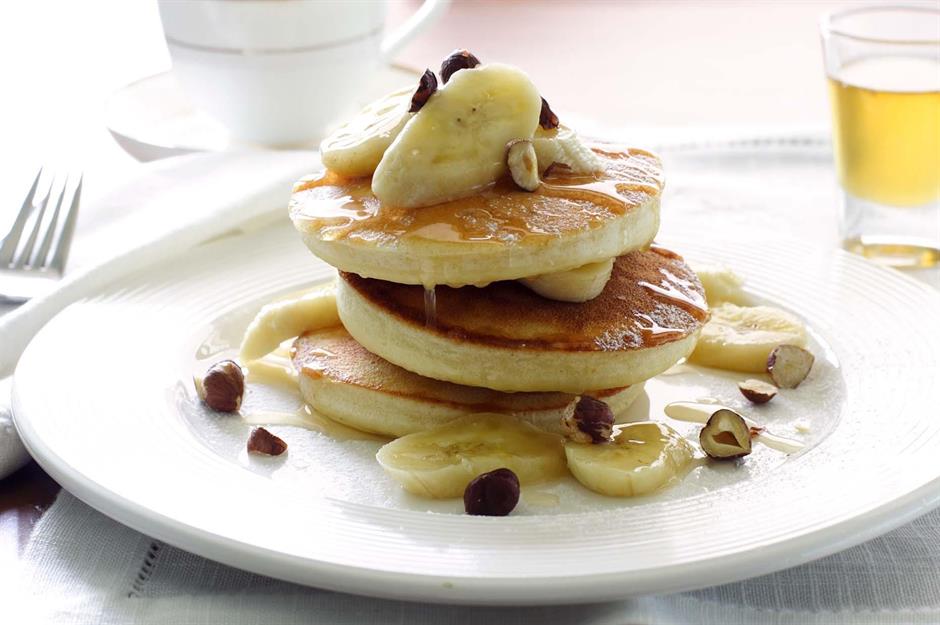
Celebrated every year on Shrove Tuesday, Pancake Day started as a way for Christians to use up their eggs, butter and flour before before the six-week abstinence period of Lent. But there's more to pancakes than classic crêpes. Here we take a look at pancake creations eaten around the globe, from sweet, sugary treats to sumptuous savoury varieties.
USA: hotcakes
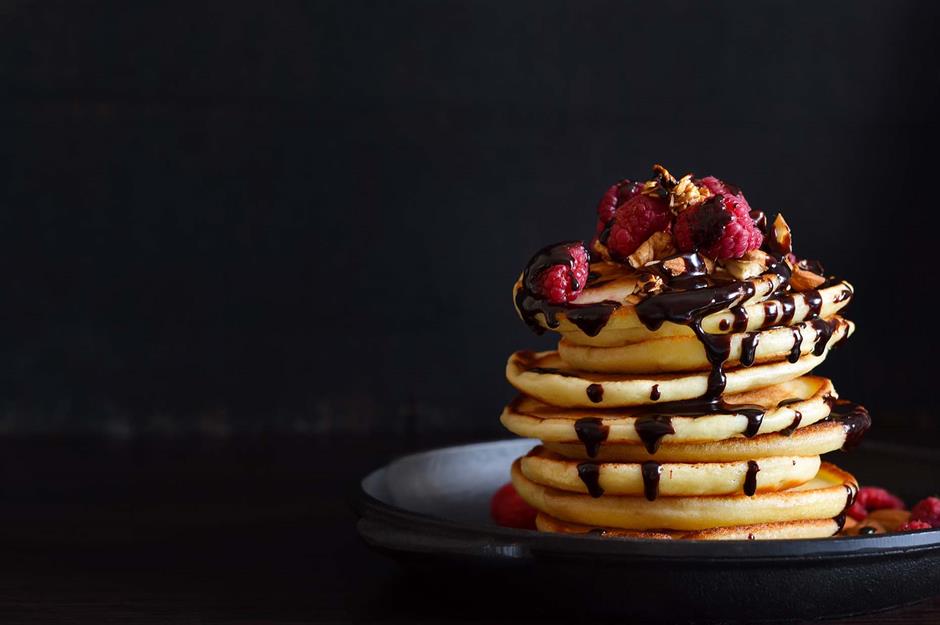
Also known as griddlecakes or flapjacks (different from the oaty bars eaten in the UK), hotcakes are so commonplace in the US that, outside the country, they're often simply called American-style pancakes. Thick, fluffy and usually found piled high in a decadent stack, you'll find them in pretty much every diner. If you've got a sweet tooth, the serving options are endless: dust them with powdered sugar, adorn them with berries, drizzle them with maple syrup or swathe them in chocolate sauce. Or, of course, serve with crispy bacon on the side.
USA: Dutch baby
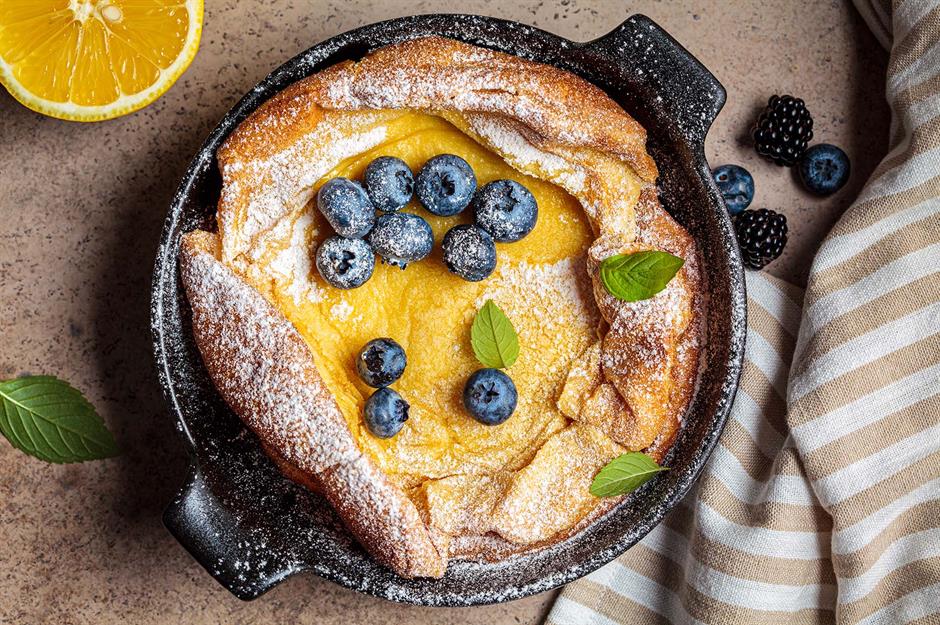
Don’t be fooled by the name – there’s nothing Dutch about this recipe, which is believed to have been invented in a Seattle café in the 1940s. The word 'Dutch' comes from a mispronunciation of the word 'Deutsch', referring to the German influence behind the dish. Like the German Pfannkuchen, the Dutch baby is a bit like a sweet version of a British Yorkshire pudding: it's baked in the oven, usually in a cast-iron pan, and rises as it cooks thanks to the eggs in the batter.
USA: hoecakes
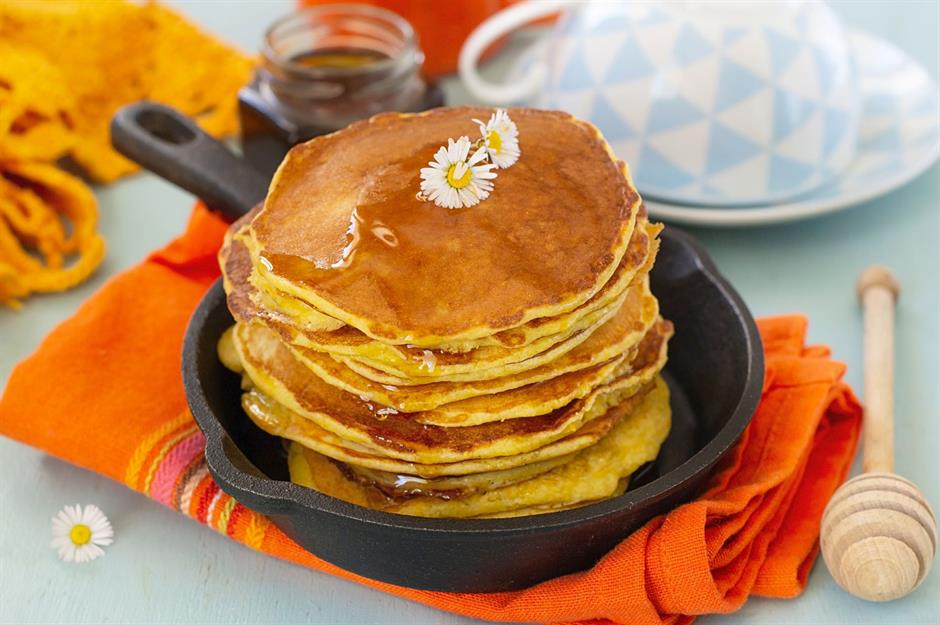
Hoecakes, also known as Johnnycakes, are hugely popular, especially in the Southern states. Like many Southern recipes, this dish uses cornmeal in the batter, giving the hoecakes that sweet, nutty taste of corn kernels. In some regions, this type of pancake will be sweet. In others, no extra sugar is added. It is a similar, yet crispier and flatter version, of cornbread.
Scotland: drop scones
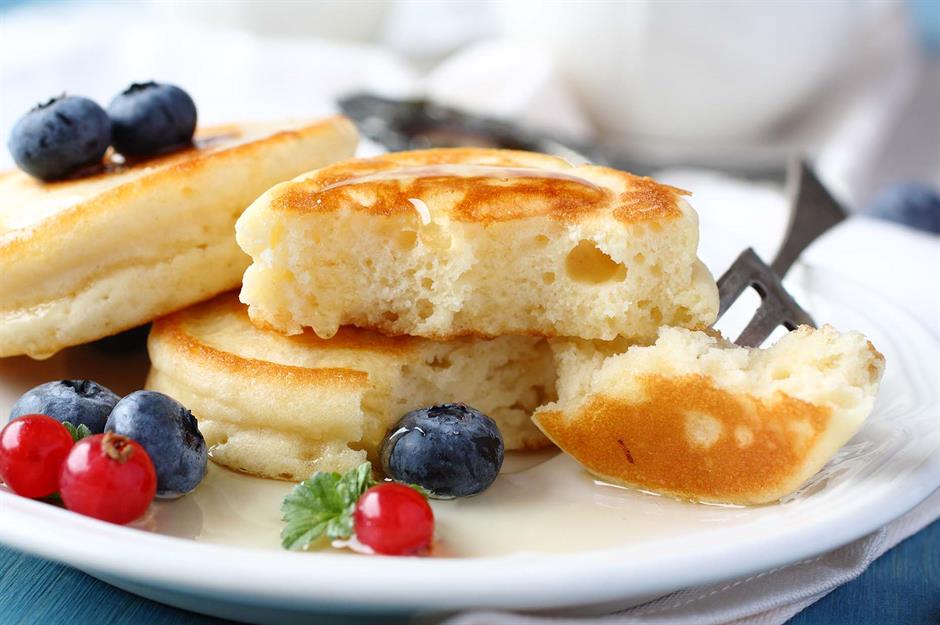
While hosting former US President Eisenhower at Balmoral Castle in 1959, the late Queen Elizabeth II treated him to a serving of drop scones, cooked on a griddle by her own fair hand. Also known as Scottish pancakes, drop scones aren't hugely different from their American counterpart (except for their smaller size) – they're thick, round and made from a batter of egg, milk and flour. Their name comes from the act of dropping the batter onto the hot griddle.
England: Staffordshire oatcakes
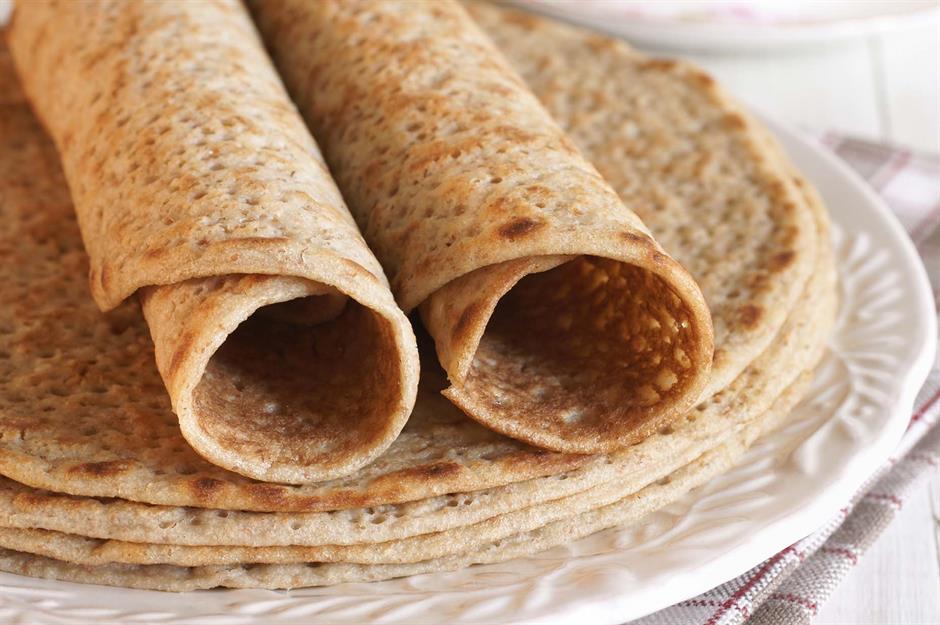
These thin brown pancakes, from Staffordshire, are made with a batter containing wheat and oats. The pancakes have a coarse texture, and are usually eaten filled with savoury toppings like cheese, ham or sausages. Once sold from ‘holes in the wall’ – house windows that faced the street, where people would queue for them – the cakes are still beloved in the area.
India: dosa
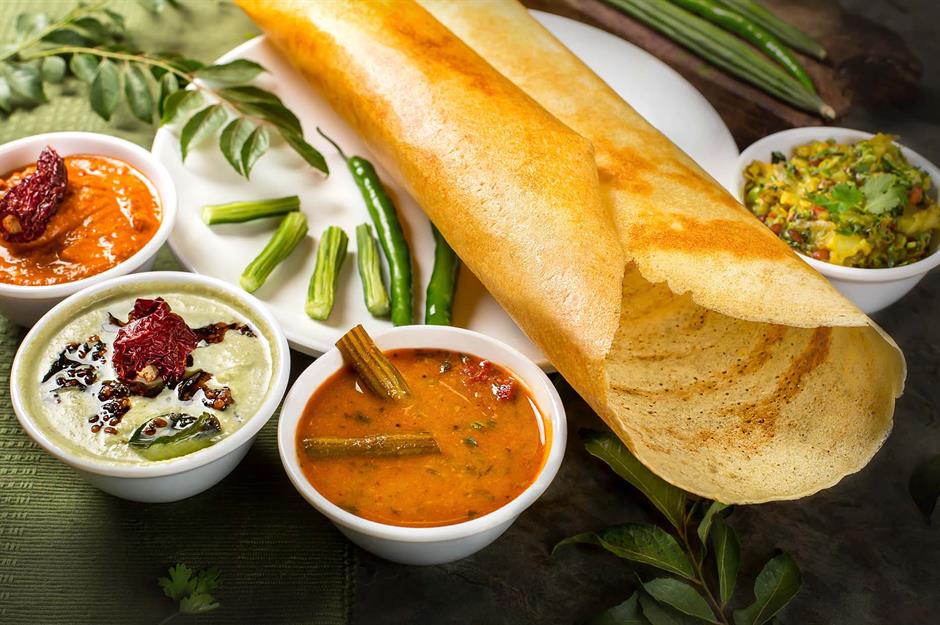
Dosas are thin, round cakes made from a fermented rice and lentil batter that's seasoned with fragrant fenugreek seeds. Typically served with a spiced vegetable filling, they're extremely popular all over India but especially in South India, where some believe they originated.
Venezuela and Colombia: cachapa
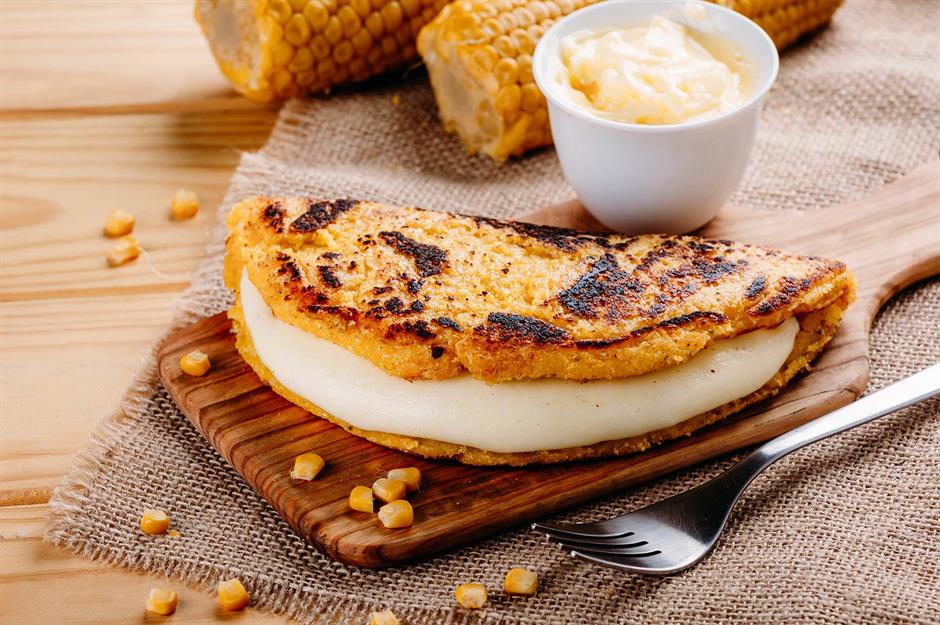
Cachapas (as they're known in Venezuela) or arepas de chócolo (as they're known in Colombia) are typical street foods made by cooking a cornmeal batter on a griddle. The pancakes are usually topped with fresh, salty cheese and served folded in half. While cachapas are a very common road-trip snack, the dish can also be eaten for any meal.
Austria: kaiserschmarrn
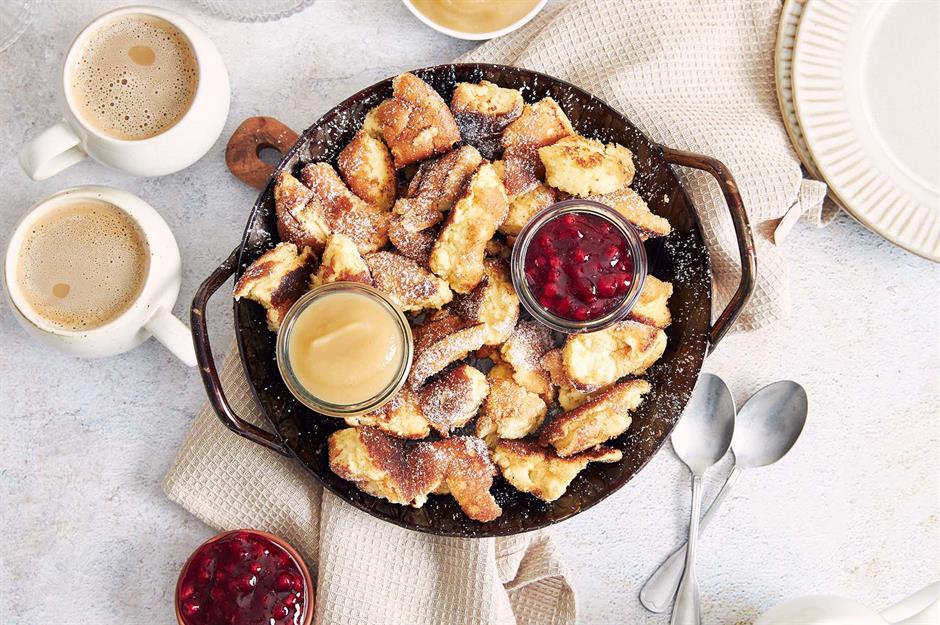
Kaiserschmarrn, which translates to 'emperor’s mess' or 'emperor’s pancakes', are delicious, chopped-up pancake morsels served with fruity toppings. This Alpine dish is rumoured to have been a favourite of the Austrian Emperor Franz Joseph, who had a sweet tooth and enjoyed simple pastries. The traditional recipe for Kaiserschmarrn uses raisins steeped in rum or kirsch, giving the treat a delightfully boozy kick.
France: crêpes
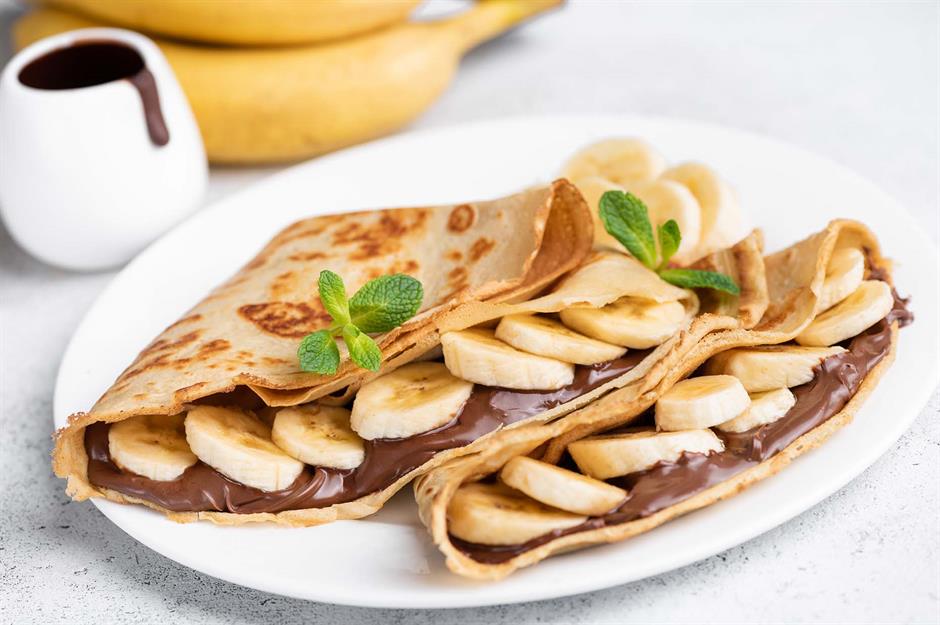
Tender, delicate and gossamer thin, French crêpes are suitably elegant. They date back to 13th-century Brittany, where they were apparently invented by accident when a housewife dropped some porridge onto a hot stovetop. Every 2 February, the French celebrate ‘le jour des crêpes’ (the day of the crêpe) – a day dedicated to indulging in this sumptuous treat.
France: Breton galette
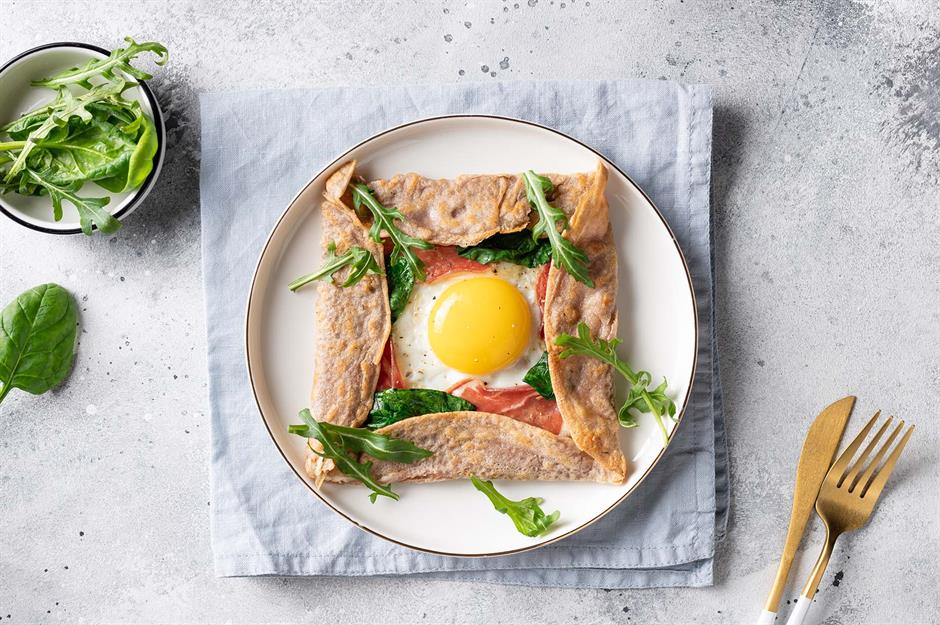
The Breton galette – not to be confused with its cousin the galette de rois or ‘king cake’ – is similar to a crêpe, but made from buckwheat flour and served exclusively with savoury fillings. In Brittany, where the dish originated, the most popular topping consists of Emmental cheese, ham and an egg. It's common for a traditional Breton galette to be enjoyed with a cupful of cider.
Get the recipe for French-style galettes with chard and Gruyère here
Japan: okonomiyaki

Okonomiyaki is one of Osaka’s most famous dishes. The street-food classic is essentially a pancake made from flour, eggs, crunchy cabbage and sometimes pork belly, and is served topped with sauces and seasonings like Japanese mayonnaise and bonito fish flakes. If you travel around Japan, you're sure to find lots of unique regional takes on the savoury snack.
Japan: fuwafuwa
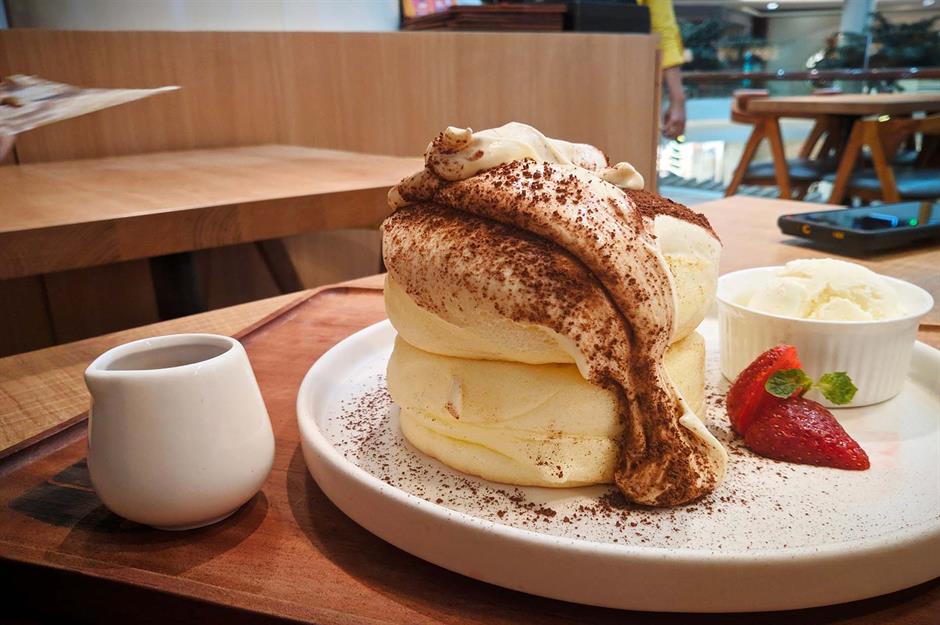
These good-looking pancakes have taken over social media with their towering, fluffy insides and their anime-style aesthetics. Fuwafuwa – often referred to as soufflé pancakes – are made in a similar manner to a soufflé: egg whites are beaten to incorporate air and folded carefully into the batter, which is then cooked on a griddle. This results in pancakes so light, eating one feels like biting into a cloud. They're usually served with sweet toppings.
Ethiopia and Eritrea: injera

Injeras are sour, pancake-like flatbreads popular in Ethiopia and Eritrea. Round and spongy, they're made from teff, a unique, millet-like grain that's an essential ingredient in these two East African cuisines. Injeras are served daily, and used to scoop up food and soak up all the sauces from stews and curries.
Denmark: aebleskiver
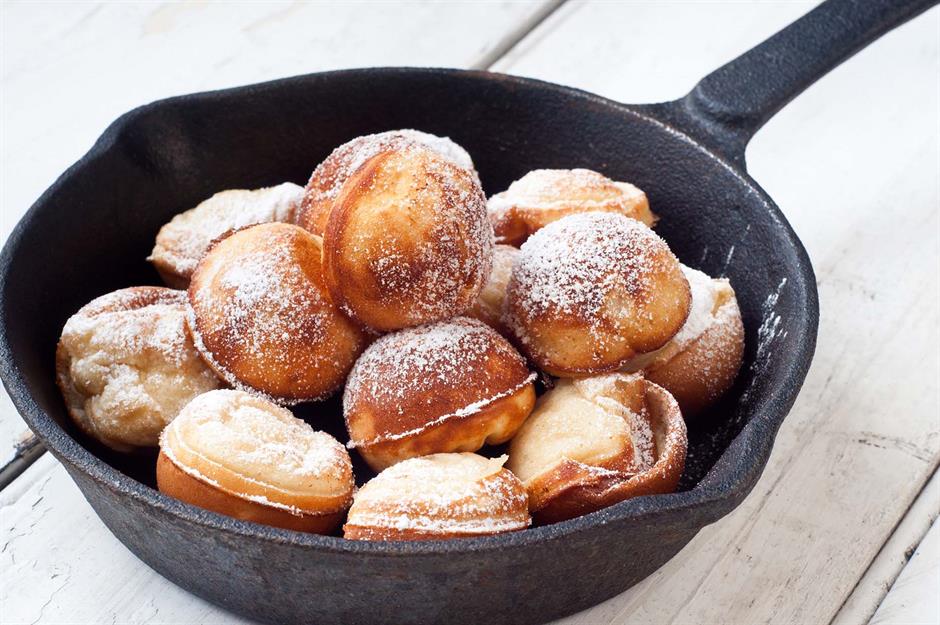
Aebleskiver, or æbleskiver, are Danish pancake balls whose name translates to ‘apple slices’ due to the fact that they traditionally contained apples. Nowadays, the dish is apple-free. Aebleskiver are cooked in a special cast-iron pan with several pancake wells, and served with a generous dusting of icing sugar. It requires skill to turn them quickly and cook them evenly, keeping that perfect round shape.
Australia: pikelets
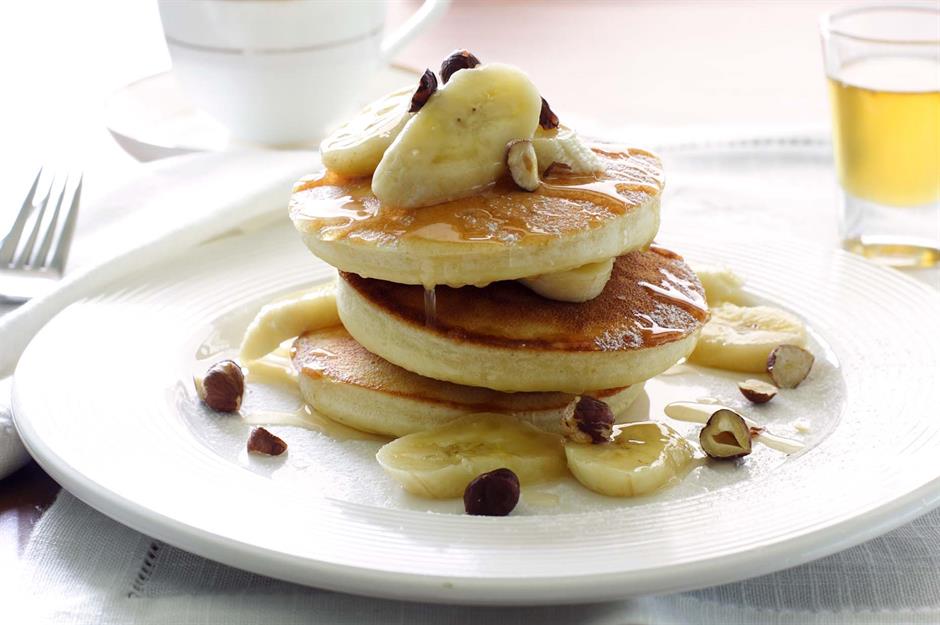
Pikelets are the Australian version of pancakes. They're smaller than American pancakes, and a little heavier, as the batter used to cook them is slightly thicker. They're not to be confused with English pikelets, which are a bit like thin crumpets; instead, they're more like Scottish drop scones, and are served in a similar fashion: topped with fruit or jam.
China: jianbing
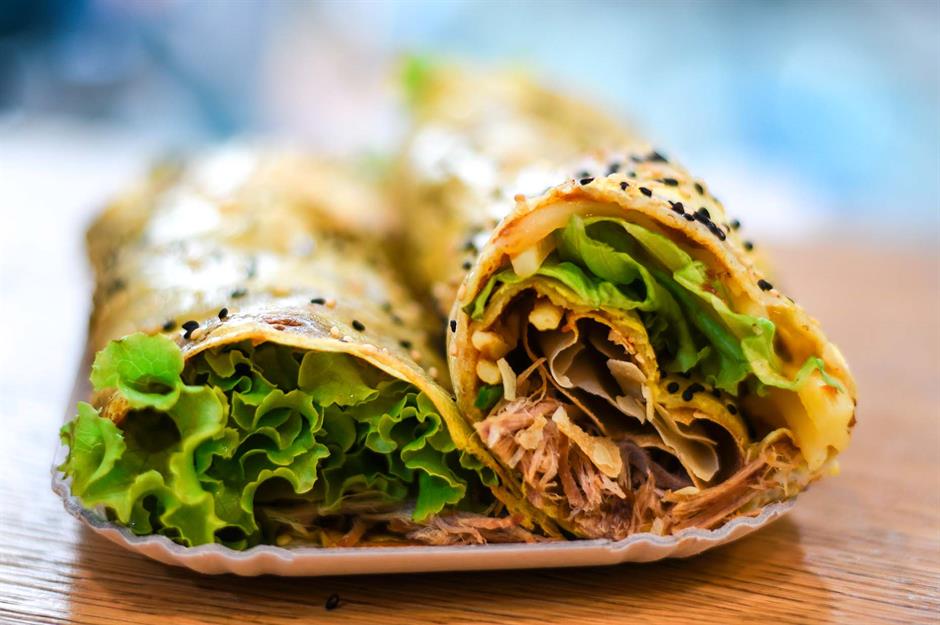
Legend has it that Chinese army warriors first cooked jianbing on their hot shields around 2,000 years ago, when they were unable to find woks. Since then, jianbing has evolved into a delicious street food, made from mung bean flour or millet flour, and filled with a range of savoury fillings. In Tianjin, the dish has become so precious that there are strict rules in place to ensure its authenticity: true jianbing must measure 38-45cm (15-18in) in diameter.
Ireland: boxty
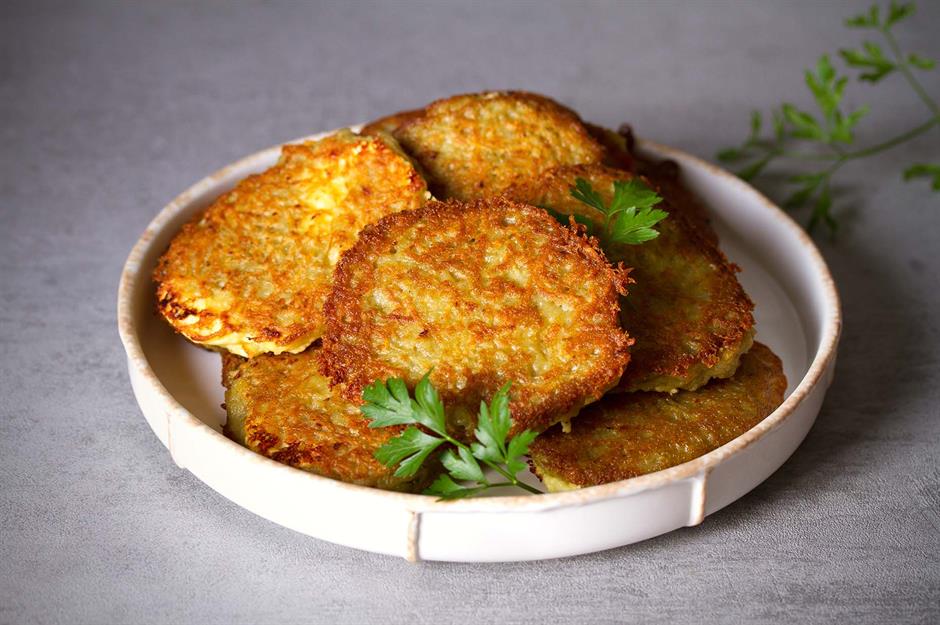
A boxty is a traditional Irish pancake made using potatoes, often served with butter or sugar or alongside a full Irish breakfast. Boxties are commonly eaten on 1 February as part of Saint Brigid’s Day, or Imbolc – an Irish celebration of the arrival of spring. They're typically made from grated potatoes, mashed potatoes, flour and milk or buttermilk. The cakes are then pan-fried on both sides.
South Korea: jeon
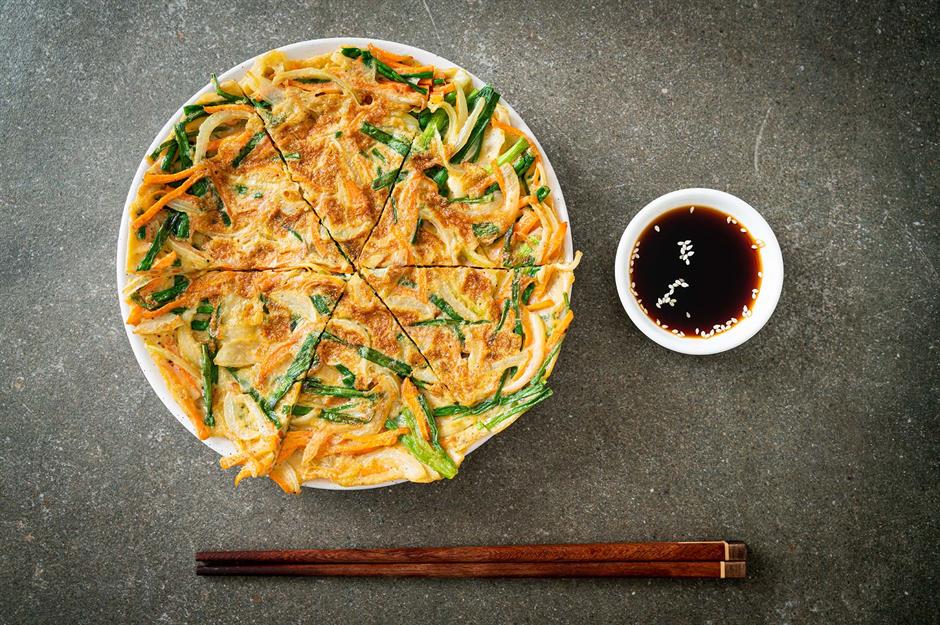
These South Korean pancakes come in many forms and are usually served as starters, side dishes or street foods. Jeon are made by thinly slicing meat, poultry, seafood or vegetables, coating them in a flour and egg batter and pan-frying, and they're traditionally eaten to celebrate the Korean Lunar New Year. The most popular varieties include shredded beef (known as yukjeon), kimchi (kimchijeon) and green onions (pajeon).
Netherlands: poffertjes

These Dutch mini-pancakes are extremely popular in street markets all over the Netherlands, where they're made on large cast-iron pans filled with semi-spherical wells. Light and fluffy, they're the perfect vessel for icing sugar and butter, or fancy toppings like chocolate and strawberries.
Germany: pfannakuchen

Pfannakuchen are thin pancakes that are usually rolled and eaten with fruit, jam and other sweet toppings. They're commonly found all over Germany, and some regions have their own names for them. This style of pancake is thicker than a crêpe, but thinner than an American pancake, and is not to be confused with a Dutch baby, which is sometimes referred to as a German pancake despite its Amerian origins.
Russia: blinis
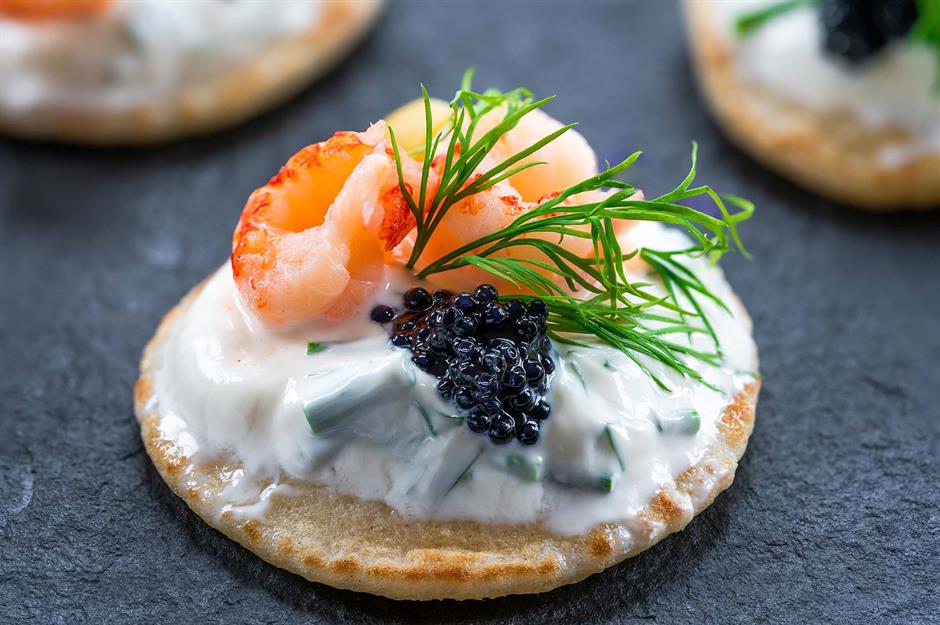
In pre-Christian times, the East Slavic people ate sun-shaped blinis to celebrate the end of cold, harsh winters – and, though we tend to think of them as a Russian delicacy, similar dishes can be found in Ukrainian and Belarusian cuisines too. Traditionally made using a yeasted wheat batter, blinis are a staple modern-day canapé, and are usually served topped with cream, salmon, caviar or sweet fruits.
Get the recipe for sweet blinis with blackberry and crème de cassis sauce here
Canada: griddlecakes with maple syrup
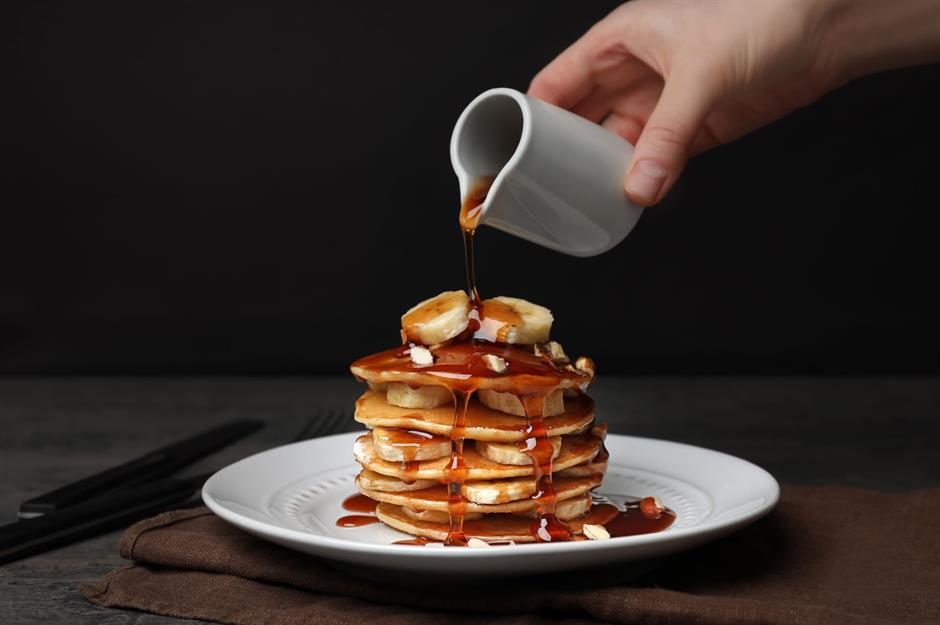
When it comes to Canadian pancakes, there are two rules: the pancakes must be soft and fluffy and, perhaps more importantly, they must be served with genuine, high-quality maple syrup. Some of the best can be found in Sugar Shacks, where maple sap is collected and turned into the world-famous drizzling syrup.
Netherlands: pannenkoek
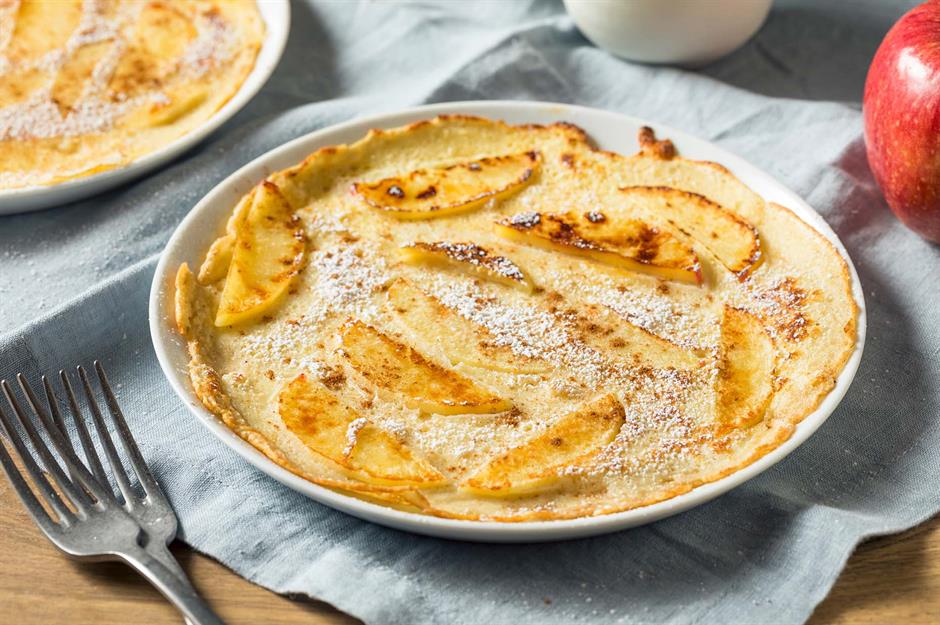
Typically eaten for breakfast, Dutch pannenkoek can be sweet or savoury. They're large and very thin and, while they're often eaten plain, they can also be jazzed up with ingredients like Gouda cheese, ham, bacon and apple slices. Unlike crêpes, the extra ingredients aren't added as a filling, but added straight into the batter during cooking.
South Africa: pannekoek

Pannekoek, the Afrikaans term for pancakes, is the South African adaptation of the Dutch pannenkoek, which was brought to the country by Dutch colonisers. Unlike the Dutch version, which is typically served flat, pannekoek are usually rolled up and sprinkled with cinnamon sugar, or filled with sweet toppings. It's a popular comfort food in South Africa, where it's considered a meal for colder days.
Now check out our perfect pancake recipes, from sweet to savoury
Comments
Do you want to comment on this article? You need to be signed in for this feature